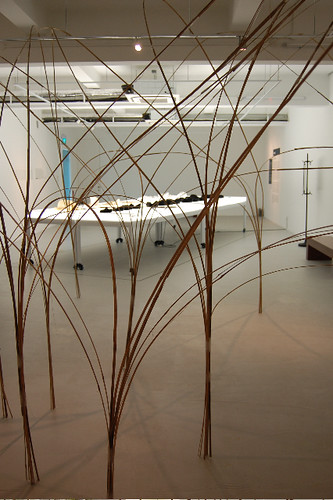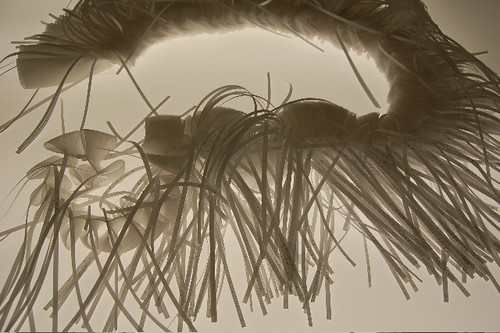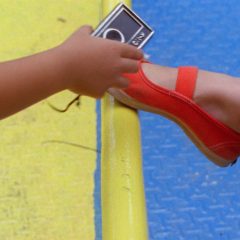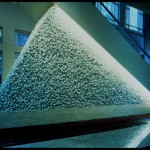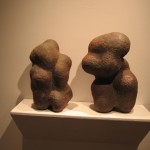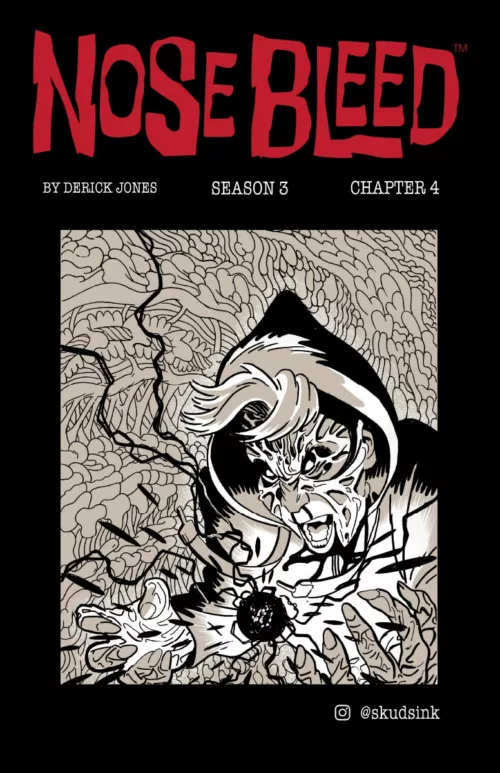We recently got this note from Mei-ling Hom and David McClelland:
Mei-ling and I are working on a couple of projects in Thailand this winter, casting bronze sculpture and editing a funeral book for a close friend who decided he needed to have his life summed up long before (hopefully) he died. We needed to make a visa run to Singapore to extend our month in Thailand to two and we met a couple of people in Singapore who gave us a quick look at what is happening in the business capital of Asia. I hope to send a couple of future postings on the foundry in Thailand and some of the painters we find interesting in Bangkok.
Here’s their first report
Post by Mei-ling Hom and David McClelland
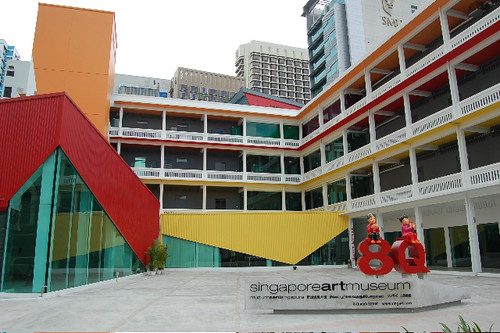
A recent trip to Singapore gave us the chance to look in on the inaugural exhibition of the Singapore Art Museum’s new exhibition space called 8Q. Located in the newly renovated building of an old school at 8 Queen Street (hence 8Q) across from the main building of the Singapore Art Museum (also an old school), 8Q chose school as the subject of its first show. Eight installations curated by eight guest curators were ranged throughout the beautifully remodeled floors of the 1960s style structure. As with other Singapore projects a massive capital budget (reportedly 5.8 million Singapore dollars) has produced a singular physical space without a correspondingly effective staff and operating budget. This can be seen in 6 month long duration of the initial exhibition and the lack of any upcoming shows on the schedule. Much of the building seemed either empty like the prime spaces flanking the courtyard on the ground level or devoted to offices on the upper floors. Because taking photos of the art work was forbidden and the guards seemed suspicious of the bearded guy with the camera not every artist gets a picture but I did sneak out a few.
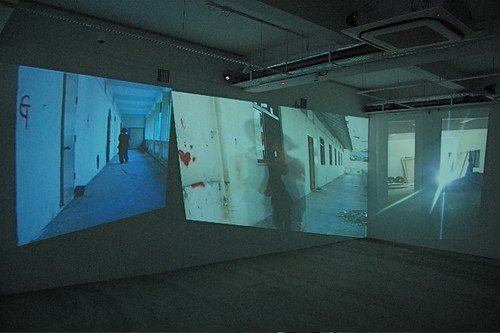
Video by Tan Kai Syng from the school show.
On the ground floor two large constructions presented disparate views of the school experience. A graphic arts collective which styles itself :Phunk Studio built a gable roofed construction roughly half the size of a regular classroom out of blackboards. Inside, a collection of conventional classroom furniture and slightly anarchic statements are meant to evoke some sort of schoolboy rebellion. The effect is heightened by the supply of chalk and erasers inviting the public to scrawl all over the exterior blackboard surface of the miniature classroom. The result is underwhelming, violence and obscenity are totally lacking and the carefully written graffitos don’t much rise above the level of Johnny loves Mary. Despite their name, :Phunk Studio has produced a very conventional memory of school days.
Jason Wee has chosen to subvert the school theme in a more obscure way. Building his installation of brightly colored paper covered cubes in the loading dock, he has produced a collection of enigmatic shapes which he illustrates on the wall and invites the viewer to reassemble mentally. There is something vaguely threatening about the size of these big shapes; it is a half remembered nightmare of some geometry test come to life.
Composer Chong Li-Chuan, the only artist to have actually attended this very school, created an aural collage of school bells and the theme from the school song deconstructed and rearranged to suggest the changes that time and reconstruction have had on the school of his childhood. The bare concrete of the museum corridors and the noise of visitors created an unkind sonic space for the installation but the faint sounds formed a haunting backdrop to a tour of what once must have been a very busy building. Tan Kai Syng also used a soundtrack, a much louder and more ominous one, to accompany the video she created of herself interacting with the spaces in the former school building. Running up and down the corridors and opening and closing doors, she evokes the fears of being late for classes or missing exams, those familiar fears that haunt our schoolday nightmares. Although the videos are dynamic they could have really swept the viewer away if they had extended to all four walls of the room.
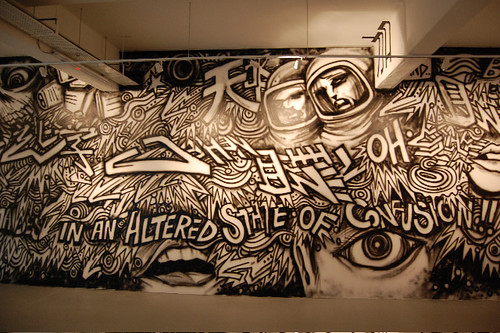
Jahan Loh does careful grafitti
The least successful installations were Jahan Loh’s clumsy spray attempts at graffiti art and the very static grouping of ceramic objects by Ahmad Abu Bakar. While the ceramics themselves were not unappealing, they were merely set on the floor in one end of a sterile room without any sort of relevance to the space. A do not pass line on the floor kept viewers from examining them closely. This is not installation art. The problem with Jahan Loh’s wall work is that Singapore is not a place that permits the kind of transgressive art/vandalism that inspires the development of serious graffiti artists and his attempts would not rate a second glance on the walls of Philadelphia or LA.
Jason Wee has a second installation on an upper floor that is uncomfortably paired with a grand light table piece by Grace Tan. She has a background in fashion design and her love for the pleasures of folding and pleating and cutting fine fabric is evident in the series of abstractions she calls Kwodrent. She has cut the tie that binds fashion to the human body and has produced simple appreciations of the sensuality of cloth. The split bamboo arches by Jason Wee that filled the other end of the same gallery are sketchily connected with tape to form meandering corridors but the whole work seems suspended between fine workmanship and brute energy without approaching either extreme.
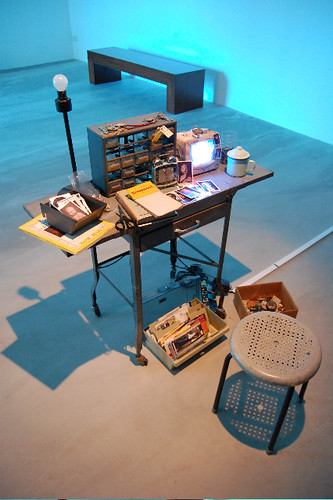
Donna Ong’s Keeper of the Dolls Memories
The single best piece, by Donna Ong, has only a tenuous link to the school theme but it makes excellent use of the space and it has perhaps the most thoughtful message. Using the preWorld War II exchange of dolls between Japan and the United States and the subsequent mystery as to their fates in their new homes as a starting point, Donna Ong creates a darkened space with a desk for a guardian of the secrets and a set of wardrobes for their care. The dolls were meant to promote understanding between the two countries after Japanese immigration to the US was banned in 1924 as the culmination of a decades long campaign of anti Asian discrimination. During the war most of the dolls on both sides of the Pacific went to unnamed fates. The desk is covered with doll photos and old ephemera and the wardrobes behind their mirrored doors are filled with annotated storage boxes that bring to mind the named niches for cremated human remains. Larger questions about the fate of immigrants far from the bosom of their families seem to swirl in the darkness.
All institutions go through birthing pains and take time to establish themselves, so we hope that 8Q Singapore Art Museum receives the continuing support and public interest that will allow them to build on the foundation of their first exhibition and bring cutting edge contemporary art to Singapore.
Singapore out-takes
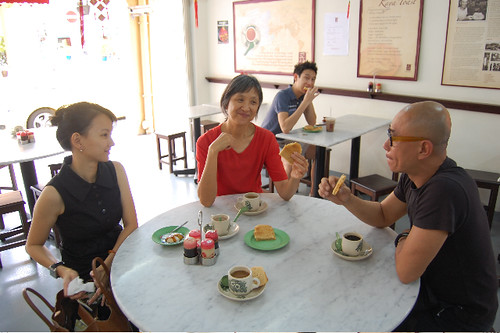
Mei-ling drinks kopi with Singaporean art guides.
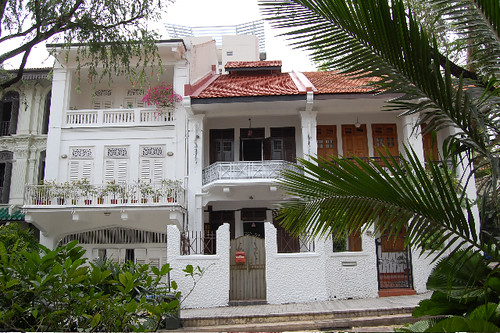
Local rowhouses are a fusion of European and Asian influences.
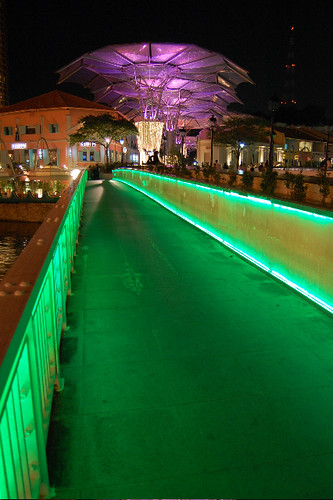
The nightlife area on the old waterfront.
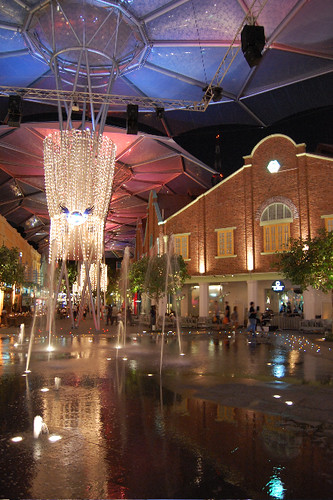
How to convert a pedestrian street to allweather party venue.

map of Southeast Asia. For those of us who are geographically challenged.
—Mei-ling Hom is working on a permanent installation for the Philadelphia airport to be installed in the Fall of 2009 and David McClelland is working as the English editor of the “Leg Up Society“, a Thai arts group.


